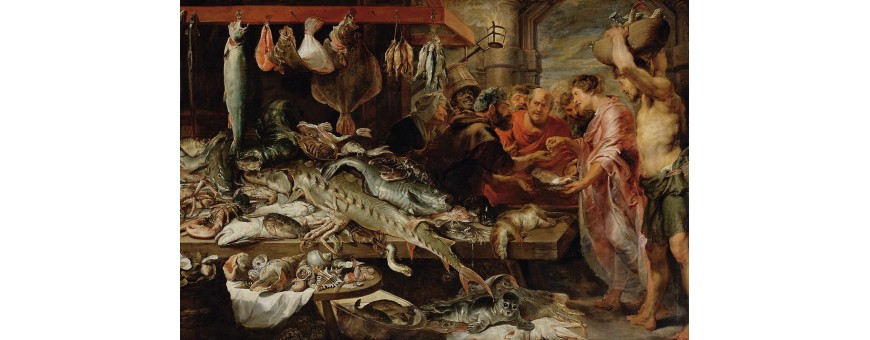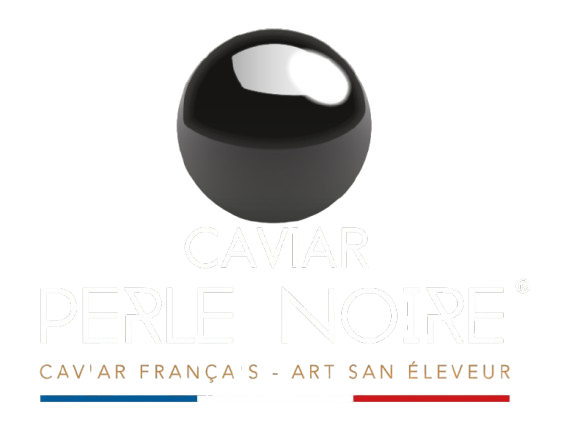Search in blog

Caviar is not Russian
‘Caviar is not Russian’
But where caviar comes from, its origins are much older than Russia. Let’s try to unravel the myth and remove the mystery of this delicious dish as the story unfolds.
It all started 250 million years ago… Sturgeon, or “The Sea Dog”, as mentioned in the legends, is part of the Acipenseridae family. He’s the oldest living bony fish. Along these 5 meters he moves the 2 tons (for the biggest one: the Acipenser Huso Dauricus) of his body without scales, until the age of 100 years and more. Anadromous, it will lay its eggs in fresh water but to feed it criss-crosses the salty waters of the earth. Or perhaps this state is due to Sokalexis, an Indian turned into a sturgeon, the first one according to Amerindian legend, who was freed from his lake by a Manitou with a superhuman force who split the rock with an axe to release the waters of the Lake….
Its "Black Gold" coming from its entrails, its eggs, going to dark-to-golden-coloured eggs do not appear until centuries later. He whispers that their preparation dates back to the Ancient Rome, according to Plin the Old, roman writer and naturalist (born 23 AD and died 79 AD in the eruption of Vesuvius near Pompeii), who recounts the making of caviar by the inhabitants of the Isle of Oone in the book IV of his work “Natural History” written 77 AD. JC
Or to the Ancient Greece according to the writings of Athénée de Naucratis, a greek scholar and grammarian, who recounts in the “Banquet of the Sages” (written in 228 AD) the description that Aristote, a greek philosopher (born 384 BC and died in 322 BC in Greece) gave of sturgeon and its eggs: the fish was adorned with wreaths of flowers, on a dish worn by servants themselves adorned with wreaths of flowers.
Could it be that Xerxes the Great relished caviar while his “Immortals” were fighting the Spartan king Leonidas if we rely on the origins of the word caviar whose etymology comes from the word “Όίόν” (egg) in ancient greek? Or is it Gengis Khân after his conquest of Persia? The origin of the word caviar is most often attributed to the Persian word “تخم مرغ” meaning fish egg.
After centuries of forgetting, it is in Persia, in the 9th century, that we find the trace of caviar, considered as a food with many virtues. Before erasing again …… But what mysteries can hide around this “Black Gold” that appears and disappears during the story? Perhaps it travels in the intimacy of a few initiates until it is shared with a deserving master refiner?
Or would it be a treasure, conquered by fighting like Yvan the Terrible? The first Tsar of Russia, Ivan IV Vasilyevich called Yvan the Terrible (born 1530 and died in Moscow in 1584), a fierce dark-eyed conqueror, launched himself into the expansion of his empire in the 16th century. At the end of the fierce fighting led by the Cossacks, fierce warriors and the capture of Astrakhan in 1556, Yvan the Terrible brought the whole course of the river ‘La Volga’ (called by the ancient Greeks the ‘Rha River’) under the control of the Russian Empire, giving it access to the Caspian Sea and prehistoric creatures inhabiting its depths. It is said that in gratitude the Cossacks obtained control of the fisheries against a meagre tribe. One hundred years later Tsar Alexis, conquered by caviar, declared Black Gold an imperial monopoly.
But the empire collapses, the Tsars are deposed and the people growl… So in 1917, after the Bolshevik revolution, the “White Russians” left the Motherland and the caviar journeyed again. Monarchists at heart, perhaps it is destiny that will guide them to this region of France, between land and sea, with an enchanting climate: Aquitaine or once Colbert, King Louis XIV’s money man, would have organized the sturgeon fishery going up the estuary of the Gironde.
From the Estuary to the Garonne in the Dordogne there is only one step towards the Périgord Noir. Region of green valleys, surrounded by thick forests hiding springs with crystal clear waters. The French cradle of the History of Man, which has lived hidden in its rock shelters since time immemorial, painted and sculpted. Could it be that the engraving of the Fish Shelter, at the Eyzies of Tayac, “World Capital of Prehistory”, is the representation of an Acipenseridae, a prehistoric creature, whose treasure, its eggs, has been travelling for 250,000 million years?
What if on the occasion of the Christmas holidays, on your dressed table, like the ancient Greeks, you answered this question by letting yourself be tempted by the hidden treasure, the Black Gold of Caviar Black Pearl ?




Leave a comment